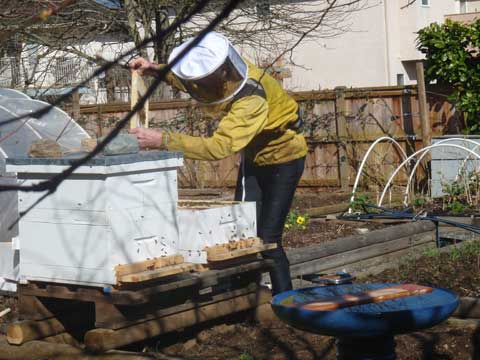
After nearly a week away on a business trip, I am returning home to find nice sunny though relatively cool weather. In the sun, the bees are beginning to forage when the temperature is just above 8 °C, but they really get busy in the afternoon when the temperature hits 10 °C; and there is no wind.
The front of the hive is busy. I decide to check on the bees, whether they took to the sugar, and how they are doing with the drawing of comb.
I am in the process of inspecting newly drawn comb, the bees being busy on the frame. I note that most of the newly drawn comb is on the upper part of the foundatino.
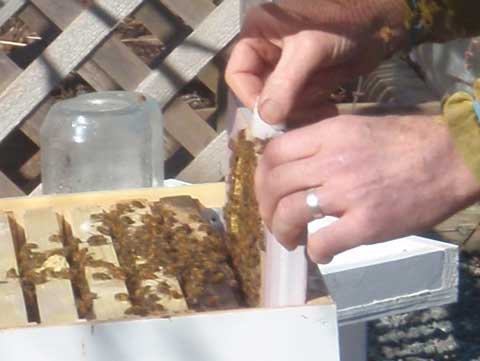
I notice that in one of the hives, the bees started to draw comb on the styrofoam which is intended to decrease the size of their living space and thereby the volume they need to heat. One can see the comb on the styrofoam in my hand. There is also a bit sugar left on one of the frames.
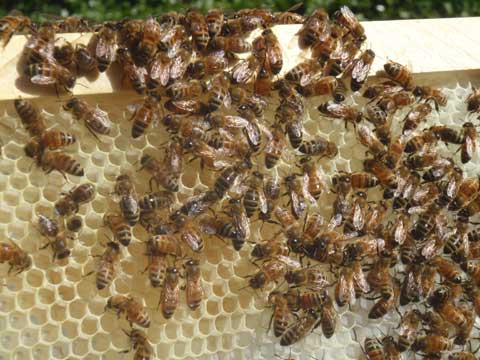
Bees busy on newly drawn comb, which tapers out to partially drawn comb on the lower part of the image.
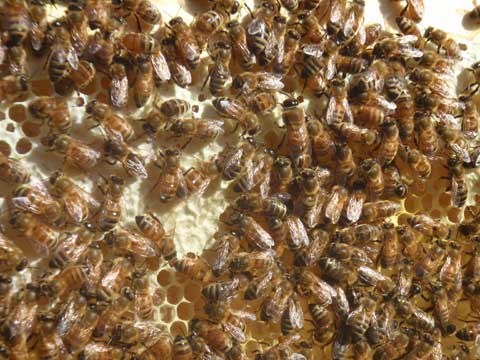
Partially and fully capped cells, in which the larva develop. When I ask Bill, he writes: "Those cells that are closed are capped brood. These cappings are a shade of brown as opposed to the white color of the wax cap over a cell containing honey."
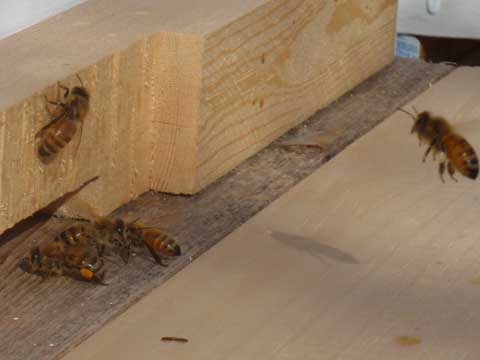
When looking closely at the returning bees, I notice that the pollen are differently colored. Bill tells me that the color depends on the flowering plant, which means that these bees are foraging on different plans. There is very brightly colored pollen on the leg of the bee currently landing (right, fuzzy) and a deep orange of the pollen on the bee just entering the hive.
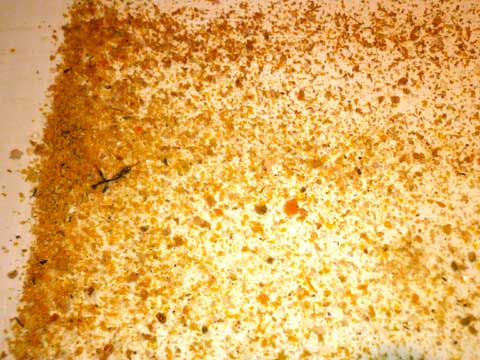
In the evening I am checking the white plastic boards below the wired bottom of the hive. There is lots of materials, some parts of bees, others probably pollen.
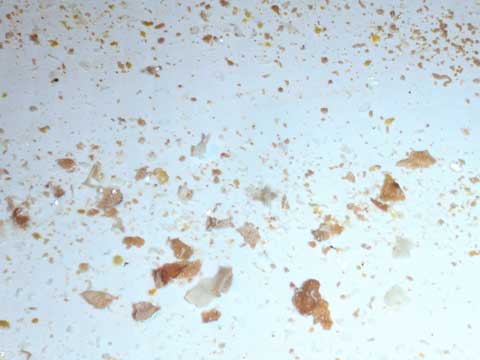
I notice some crystals, which is probably from the sugar that they received and which recrystallized.